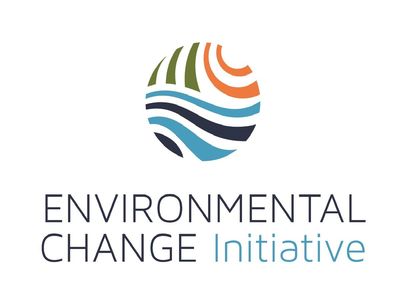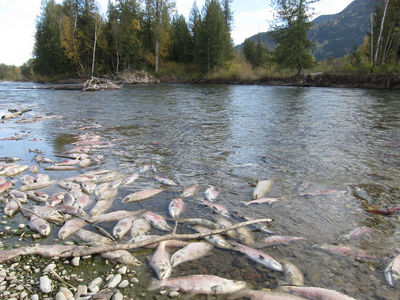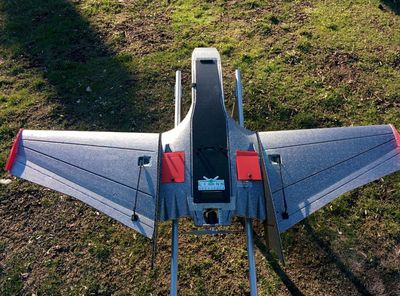
The 14 investigators who received 2017 seed grants from the Notre Dame Environmental Change Initiative (ND-ECI) are seeing their research bear fruit in ways that include testing the environmental impact of nanomaterials, using crowd sensing to detect groundwater well contamination, and studying Great Lakes salmon in light of Laudato si.’
“Seed grants are vital to our ‘Science Serving Society’ mission,” said Jennifer Tank, Galla Professor of Biology and Director of ND-ECI. “They allow faculty to jumpstart new research endeavors, strengthen innovative collaborations, and support larger extramural awards.” She added that, “The 2017 call for proposals was a bit of an experiment in itself. We added the unique twist of requiring a collaboration with another Center or Institute, in an effort to build bridges across areas of research excellence at Notre Dame.”
The ongoing research highlighted below was funded through the 2017 ND-ECI seed grant:
Crowdsensing framework for environmental monitoring
ND-ECI Investigators: Dong Wang (CSE), Na Wei (CEEES), Gregory Madey (CSE)
Partners: ND-ECI, Interdisciplinary Center for Network Science and Application (iCeNSA)
Crowdsensing can be an efficient approach to environmental water monitoring that allows community members to collect large amounts of data in a timely, cost-effective manner. For this project, researchers have developed a data-driven, model-based crowdsensing framework, and are testing it using a Smart Water Sensing platform they developed with a previous NSF EAGER grant. To validate the framework, students from Penn-Harrison-Madison schools who live in Granger, IN, are given test strips to assess well water samples from their homes. Students then use a smart phone app to determine frequency of the sampling and to report their results.
Progress: The project team has developed a website for data collection, data sharing, education and outreach. In early observations, the data show that crowd sensors (the individuals who collect the data) need guidance to provide reliable outcomes: 35% had statistically-significant measurement errors. And initially, only about half of the crowd sensors reported their data at the requested time. However, once small cash incentives were added, the number of valid measurements increased significantly.
Impact: Data from the project has helped the team develop a full proposal for an NSF 2018 Smart and Connected Communities grant. The proposal involves Wang, Wei, as well as Jennifer Tank (BIOS), Diogo Bolster (CEEES), and Danielle Wood (Center for Social Concerns) all at Notre Dame.
Aquatic natural organic matter adsorption onto engineered nanomaterials
ND-ECI Investigators: Kyle Doudrick (CEEES), Prakash Nallathamby (NDnano)
Partners: ND-ECI, Notre Dame Center for Nano Science and Technology (NDnano)

Engineered nanomaterials (ENM) have become common in consumer products such as clothing, electronics and food packaging. During their life cycle, from manufacture to disposal, they will at some point be released into the environment. Understanding how this process occurs is essential for determining the risk that ENMs pose to environmental and human health. While ENMs begin as simple, pristine particles, their surface becomes more complex as they interact with the natural environment. For example, polymers from plastics or the macromolecules that are now ubiquitous in streams and rivers in urban landscapes. The project will develop a real-time, in-situ interface to study how ENMs interact with natural organic materials found in the environment.
Progress: Of the 72 planned experiments, the group is making good progress, with some surprising results. Initial experiments have shown that the behavior of dissolved organic matter sorption onto ENPs does not change significantly when comparing negatively- and positively-charged ENP surfaces. Since the original hypothesis held that the two surfaces would behave differently, the team now plans to explore this phenomenon further. Based on the preliminary data collected so far, they plan to submit two larger proposals in the next six months to NSF and USDA NIFA.
Impact: In general, research outcomes will inform our understating about organic matter sorption to nano-engineered surfaces, and will also potentially lend themselves to more generalized sorption processes in the environment, such as those between natural nanoparticles (e.g., fulvic acid) and engineered nanoparticles.
Theological environmental ethics of introduced Pacific salmon
ND-ECI Investigators: Dom Chaloner (BIOS), Fr. Terrence Ehrman, C.S.C. (CTSHF), Bharat Ranganathan (ND-ECI/CTSHF)
Partners: ND-ECI, Center for Theology, Science and Human Flourishing (CTSHF)

The stocking of Pacific salmon in the Great Lakes during the 1960s provides a cautionary tale about human ecological intervention. While the salmon have been a boon to the fishing industry, their unforeseen side effects include persistent organic pollutants that accumulate in salmon, and are transferred to the people and wildlife who eat them. This project will use Laudato si’s integral ecology perspective to examine this dilemma from the disciplines of biology, ethics and theology. The research is exploring questions such as: What responsibility do humans have to the natural world, and even individual species such as salmon? What ethical and legal principles govern ecological restoration of degraded or manipulated ecosystems?
Progress: Through their deliberations, the team has broadened their research perspective and developed a larger proposal to seek private foundation support. The plan includes data-gathering through interviews, and development of a framework to guide public discussions about issues such as Great Lakes salmon, and environmental change more generally. The project would conclude with a Notre Dame conference on public engagement in the spirit of Laudato si’.
Impact: To learn more about the group’s process and lessons learned, see “Theology, ethics and … salmon? Unlikely trio find unity in Laudato si’”. The team is also preparing a manuscript based on their work.
Remote sensing cover crop influence on water quality
ND-ECI Investigators: Jane Wyngaard (CRC), Milan Budhathoki (CRC/ECI), Jarek Nabrzyski (CRC),
Partners: ND-ECI, Center for Research Computing (CRC)

Over fertilization is a common problem that results in nutrient runoff into waterways, causing algal blooms and other major ecological disruptions. However, farmers are using conservation practices (e.g., winter cover crops) to reduce runoff and downstream pollution. This project will use an ND-managed drone to remotely asses the biomass of cover crops, specifically in winter, and link this coverage to nutrient losses from fields to adjacent waterways, at the watershed scale. It will use field data currently being collected via an ongoing USDA-funded project assessing the links between cover crops and water quality.
Progress: The team has purchased a large, fixed-wing drone with a multispectral camera, and flights will begin once the spring weather improves. They’ve also built a drone data processing pipeline, which will publish on the open-source Wholetale site. Still underway is a research processing pipeline that will compare and integrate water samples taken on site with the drone DEM (Digital Elevation Model) data. Primarily, the team wants to learn if their equipment can be calibrated to detect reliable measures of nutrient run-off concentration, based on cover crop biomass. If so, they could replace or reduce the costs of manual water sampling by flying a drone over fields to capture biomass and infer nutrient runoff.
Impact: The team is eager to pursue similar projects once they acquire data from their ND-ECI seed grant project. The multispectral camera used to create DEMs can be applied in many investigations. For example, team members hope to use the drone at UNDERC this summer, and possibly on a project with the Indiana Toll Road. Wyngaard is currently writing a USDA proposal to create teaching materials and open source drone kits that will teach high-schoolers the theory and practice of using drones for agriculture.
Coastal Homeowners in a Changing Climate
ND-ECI Investigators: Debra Javeline (Political Science), Tracy Kijewski-Correa (Keough & CEEES)
Partners: ND-ECI, Notre Dame Global Adaptation Initiative (ND-GAIN)

Coastal homeowners are potentially crucial actors in reducing the risks to property and human life from rising seas and increased hurricane activity. Absent strict, enforceable regulations that mandate retrofitting of existing homes or major changes in homeowner insurance requirements, coastal resilience in a changing climate will largely reflect the private, voluntary decisions made by millions of individuals. However, we currently know little about these decisions. Research is scarce on the current risk level of U.S. coastal homes and the risk-reducing measures that homeowners are taking or plan to take. Far more research has been devoted to post-disaster recovery than to pre-disaster protective behavior, despite the cost-effectiveness of the latter. The team is filling this critical gap by providing a strategy to measure vulnerability reduction through enhanced structural protection, based on homeowner self-reporting about various features of their home’s structure, as well as their actions. The team conducted a large Coastal Homeowner Survey with 662 respondents, in New Hanover County, NC, which is one of the most frequently exposed coastal communities, and they are using the subsequent indices to assess homeowner risk.
Progress: The team recently submitted an article on the project to the journal Climatic Change, and it is now in review. Among its findings, the survey showed that many respondents had taken few steps to protect their homes from hurricane damage: only 10.5 % had sealed the plywood under their roofs to prevent water penetration, while even fewer (5.4 %) had installed hurricane straps, a low-cost metal tie that secures roof trusses to rafters. Javeline and Kijewski-Correa hope that their survey data will “arm stakeholders with vital information” and encourage insurers, builders and citizens to make homes more hurricane resilient.
Impact: Javeline and Kijewski-Correa have since begun a similar research project in Haiti, working in two locations, one devastated by an earthquake and another devastated by a hurricane. They are asking similar questions about why some homeowners build more resiliently than others, with the new focus on rebuilding in a post-disaster context.